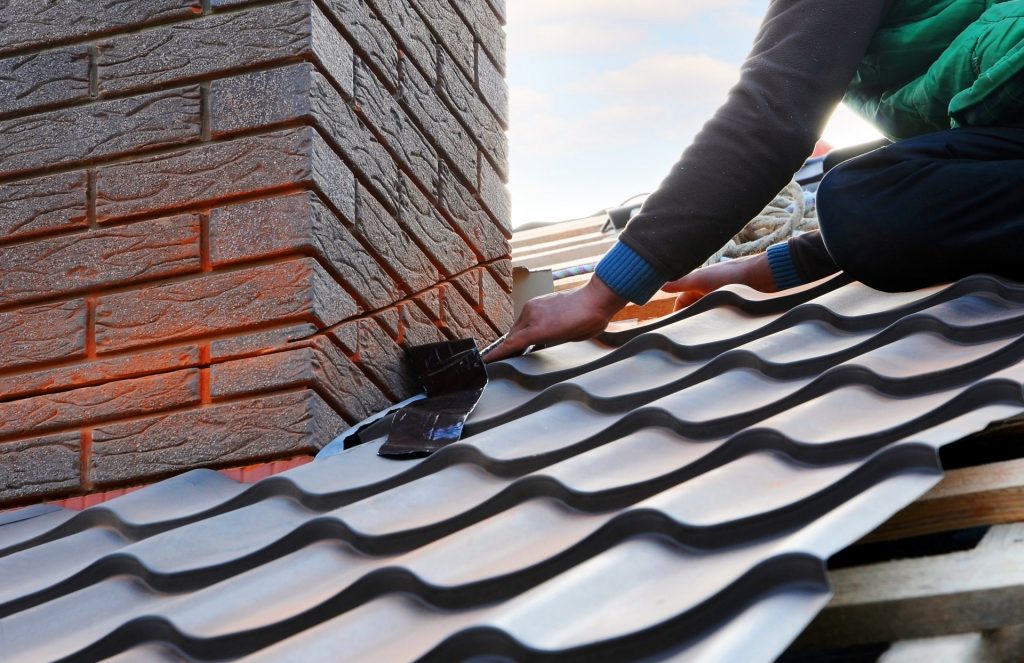The Ultimate Guide to Roof Bedding & Pointing
If you’re looking for a comprehensive guide to roof bedding and pointing, you’ve come to the right place. In this blog post, we will cover everything you need to know about these two important aspects of roofing. Bedding is the process of applying a sealant or adhesive to the surface of the roof before applying tiles or other materials. Guide to roof Bedding and Pointing.
This helps to create a watertight seal and prevent leaks. Pointing is the process of filling in gaps between roof tiles with mortar or another type of sealant. Both bedding and pointing are important for ensuring a long-lasting, watertight roof. Read on for more information about each process, as well as tips for choosing the right materials and products.

What is Roof Bedding & Pointing?
Roof bedding and pointing is a process used to waterproof and repair roofs. It involves applying a layer of waterproofing material, such as tar or asphalt, to the roof surface and then covering it with a layer of gravel or sand. The gravel or sand helps protect the waterproofing material from UV rays, weathering, and high wind.
The Different Types of Roof Bedding & Pointing
There are two main types of roof bedding: mortar bedding and dry-fix bedding. Mortar bedding is the traditional method of installing roof tiles, where each concrete tile is individually bedded in a layer of mortar. Dry fix bedding is a newer method that uses specialized clips or battens to hold the tiles in place, eliminating the need for individual bedding.
Pointing is the process of sealing the gaps between roof tiles with a waterproof sealant. This helps to prevent water ingress and can also improve the appearance of your roof. There are two main types of pointing: cement pointing and bitumen pointing.
Cement pointing is the more traditional method, involving mixing cement mortar with water to create a putty-like consistency, which is then applied to the gaps between tiles. Bitumen pointing uses a pre-mixed sealant which is simply applied to the gaps using a trowel.
Pros and Cons of Roof Bedding & Pointing
There are a few different schools of thought when it comes to roof bedding and pointing. Some believe that it is an essential part of maintaining a roof, while others believe that it is unnecessary work that can damage a roof. So, what are the pros and cons of roof bedding and pointing?
On the pro side, those who advocate for roof bedding and pointing say that it can extend the life of a roof by preventing water and moisture from seeping in and causing damage. It can also help to prevent moss and other growths from taking hold of the roof. Additionally, proponents say that bedding and pointing can improve the appearance of a roof by making it look neater and more well-kept.
On the con side, some argue that roof bedding and pointing are not necessary to work unless there is already damage to the roof. They also contend that if done improperly, bedding and pointing can cause more harm than good by trapping moisture against the roof tiles which can lead to rot or mould. Additionally, some DIY enthusiasts argue that this is a job best left to professionals since it requires precision to be done correctly.
So, what do you think? Are roof bedding and pointing worth the time and effort? Or is it something you can skip without damaging your home?
What Materials are Needed for Roof Bedding & Pointing?
The materials you will need for roof bedding and pointing depend on the type of roofing system you have. If you have a shingle roof, you will need asphalt felt paper, flashing, and sealant. For a tile or slate roof, you will need mortar mix, flashing, and sealant. And for a metal roof, you will need flashing and sealant.
Asphalt felt paper is used to create a water-resistant barrier between the roofing material and the underlying decking. This paper is available in rolls at most home improvement stores.
Flashing is used to seal around openings in the roof, such as vents and skylights. Flashing is available in rolls at most home improvement stores.
Sealant is used to fill gaps and cracks in the roofing material. Sealant is available in tubes at most home improvement stores.
Mortar mix is used to create a strong bond between the tiles or slates on your roof. Mortar mix is available in bags at most home improvement stores.
How to Apply Roof Bedding & Pointing
Roof bedding is the process of creating a base for your roof tiles. This is done by spreading mortar over the surface of your roof before laying down the tiles. The mortar acts as a foundation for the tiles and helps to keep them in place.
Pointing is the process of filling in gaps between roof tiles. This is important for both aesthetic and functional purposes. Pointing helps to create a seal that keeps water from seeping through cracks and causing damage to your home.
Applying roof bedding and pointing can be done by DIYers with some experience. However, it’s always best to consult with a professional roofer to ensure the job is done correctly.
What is roof bedding?
Roof bedding is a material that is placed between the roofing tiles and the underlying structure. It is used to provide a level surface for the tiles to be laid on and to promote the drainage of water from the roof. Roof bedding can be made from a variety of materials, including concrete, sand, and mortar.
What is roof pointing?
Roof pointing is the process of sealing the joints between bricks or other masonry units on a roof. The sealant, called mortar, fills the joints and prevents water from seeping through. Not only does this protect the roof from water damage, but it also strengthens the overall structure.
The benefits of roof bedding and pointing
The benefits of roof bedding and pointing are many and varied. Roof bedding provides a solid, stable base for your roof tiles, keeping them in place and protecting them from the elements. It also helps to prevent moisture and water ingress, which can lead to serious problems like dampness, mould, and rot.
Pointing helps to improve the appearance of your roof, as well as providing an extra layer of protection against the elements. It also makes it easier to clean your gutters and downpipes and can help to prolong the life of your roof.
How to choose the right roof bedding and pointing for your home
When it comes to choosing the right roof bedding and pointing for your home, there are a few things you need to take into consideration. First, you need to decide what type of roofing system you have. There are two main types of roofs: pitched and flat. Pitched roofs are typically found on homes with more than one story, while flat roofs are common on ranch-style homes and other single-story dwellings.
Once you know what type of roof you have, you can narrow down your choices for bedding and pointing materials. For pitched roofs, asphalt shingles are the most popular option. If you have a flat roof, however, you may want to consider using a rubber membrane or built-up tar and gravel.
Once you’ve selected a material, you need to choose the right colour. You should pick a colour that compliments the exterior of your home and doesn’t clash with the trim or gutters. You also need to make sure the colour you choose is appropriate for the climate in your area.
For example, dark colours absorb heat and light colours reflect it. This can be an important factor to consider if you live in an area with extreme temperatures.
Finally, you need to think about the roofing style of your home when choosing bedding and pointing materials. If you have a traditional home, brick or stone veneer may be the best option. If your home is more modern, however, metal panels or synthetic stucco may be
Conclusion
We hope that this guide has helped explain the basics of roof bedding and pointing. This is a vital part of maintaining your roof and keeping it in good condition, and energy efficient so it’s important to make sure you understand the process. If you have any further questions or need help with your roof and roof repair, feel free to contact a professional and a roofing contractor for assistance.



